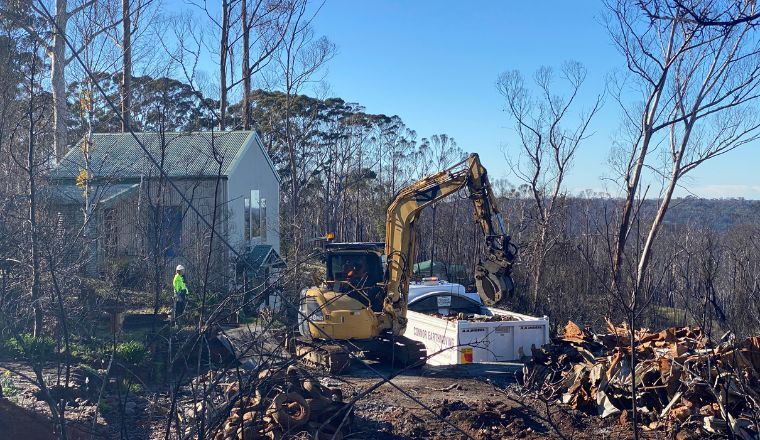The 2019-2020 bushfire season was the most widespread and extreme that NSW has ever experienced, impacting more than 5.3 million hectares or 6.7% of the state. The scale and complexity of the clean-up presented unprecedented and unpredictable challenges across regional NSW. This included large volumes of waste, complex logistics and managing thousands of requests for help.
Making communities safe
The NSW Bushfire Clean-Up Program was introduced in response to the needs of people across NSW who lost homes and businesses. Fires continued to burn as properties were assessed and clean-ups commenced, which meant the scale of the task continued to evolve. Personal contact was made with each property owner and a call centre was established to manage questions and enquiries. More than 30,000 emails and 4000 calls were processed through the call centre.
Local contractors were used to clear debris from fire-damaged properties to make communities safe as quickly as possible. The program cleaned up over 3600 properties across 45 local government areas and provided local jobs in impacted communities, assisting with economic recovery. Over 30 waste sites were used throughout NSW and Queensland which handled nearly 340,000 tonnes of general and special waste. Waste from isolated locations had to be transported significant distances.
Rebuilding and healing
Responding urgently to changing circumstances ensured NSW communities had safe foundations to rebuild and heal. Targeted initiatives and investments helped to support recovery, generate jobs and build more resilient communities and industries in the regions most impacted.
